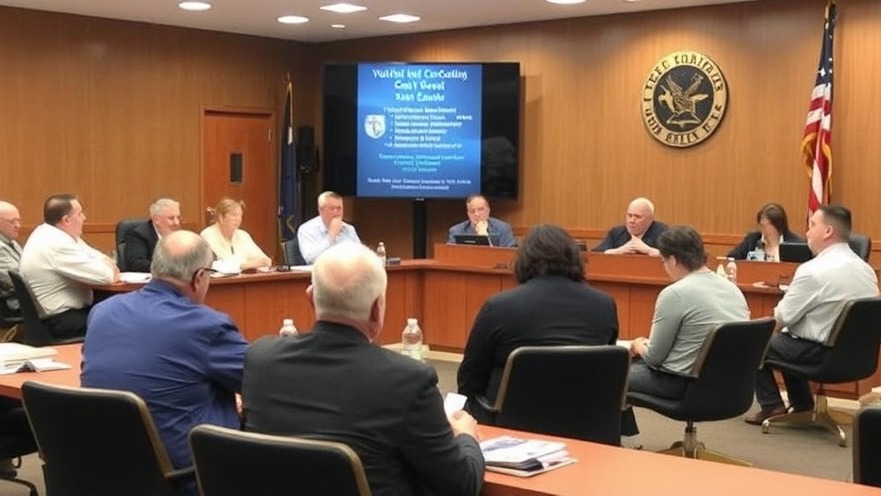
Understanding Seal Beach's Water and Sewer Finances
As Seal Beach grapples with the financial aspects of its aging water and sewer infrastructure, the local City Council recently convened to discuss critical issues affecting the community. Public Works Director Iris Lee addressed residents about the challenges facing the city, underscoring the importance of proactive financial planning for essential services that many take for granted.
The Reality of Aging Infrastructure
Founded in 1915, much of Seal Beach's infrastructure dates back over a century. Lee highlighted that the city's water and sewer systems are largely out of date, leading to a string of failures and unexpected expenses that have burdened the city budget. Between emergency repairs and costly water importation, over $1.5 million has been spent in just over a year to maintain the systems. This financial strain not only affects city operations but could also influence local residents' daily lives.
Opportunity for Community Voices
Lee's candid acknowledgment of the underappreciated nature of water and sewer services encourages a renewed discussion among residents. While many may overlook these essential services, the council's decision to delay changes to water and sewer rates last year reveals a community grappling with differing perspectives on fiscal responsibility and modernization. This marks a critical moment for community dialogues where voices can share concerns and priorities openly.
Exploring Rate Changes: Impacts on Future Projects
At the recent city council meeting, two water rate scenarios were presented, each with potential repercussions for local infrastructure projects. One scenario could delay much-needed assessments and upgrades, which complicates long-term planning and affects everyone from families to local businesses. Readers, particularly locals in Huntington Beach, should consider how proposed changes might directly impact their water service and environment.
Consequences of Inaction: What's at Stake?
The city’s financial state may limit its ability to perform necessary upgrades, leading to further problems in the future. Ignoring these issues, as Lee implies, doesn't make them go away—services do not improve on their own, and deferred maintenance can lead to more significant problems down the line. Members of the community need to be aware of the ramifications of underfunded infrastructure, including possible drought implications and service interruptions.
Community-Driven Solutions for Sustainability
It’s time for a grass-roots approach, where community members are involved in the discussions about how best to maintain and improve these critical services. Engaging local citizens to share their experiences and advocate for better management practices could foster innovative solutions. This could include exploring alternative funding sources or partnerships that prioritize sustainability and resilience within the community.
Conclusion: The Importance of Participating in the Conversation
As Seal Beach's community considers options for the future of their water and sewer systems, residents should seize the opportunity to engage in this discussion. Understanding and voicing concerns can foster a more informed approach to fiscal management, ultimately resulting in a healthier, more sustainable Seal Beach. By coming together, community members can ensure their needs are met while advocating for transparent and fair practices that matter to them.
Join the conversation and stay informed about upcoming council meetings where these crucial topics are discussed. Your voice matters and can help shape the future of our beloved Seal Beach!
 Add Row
Add Row  Add
Add 




Write A Comment